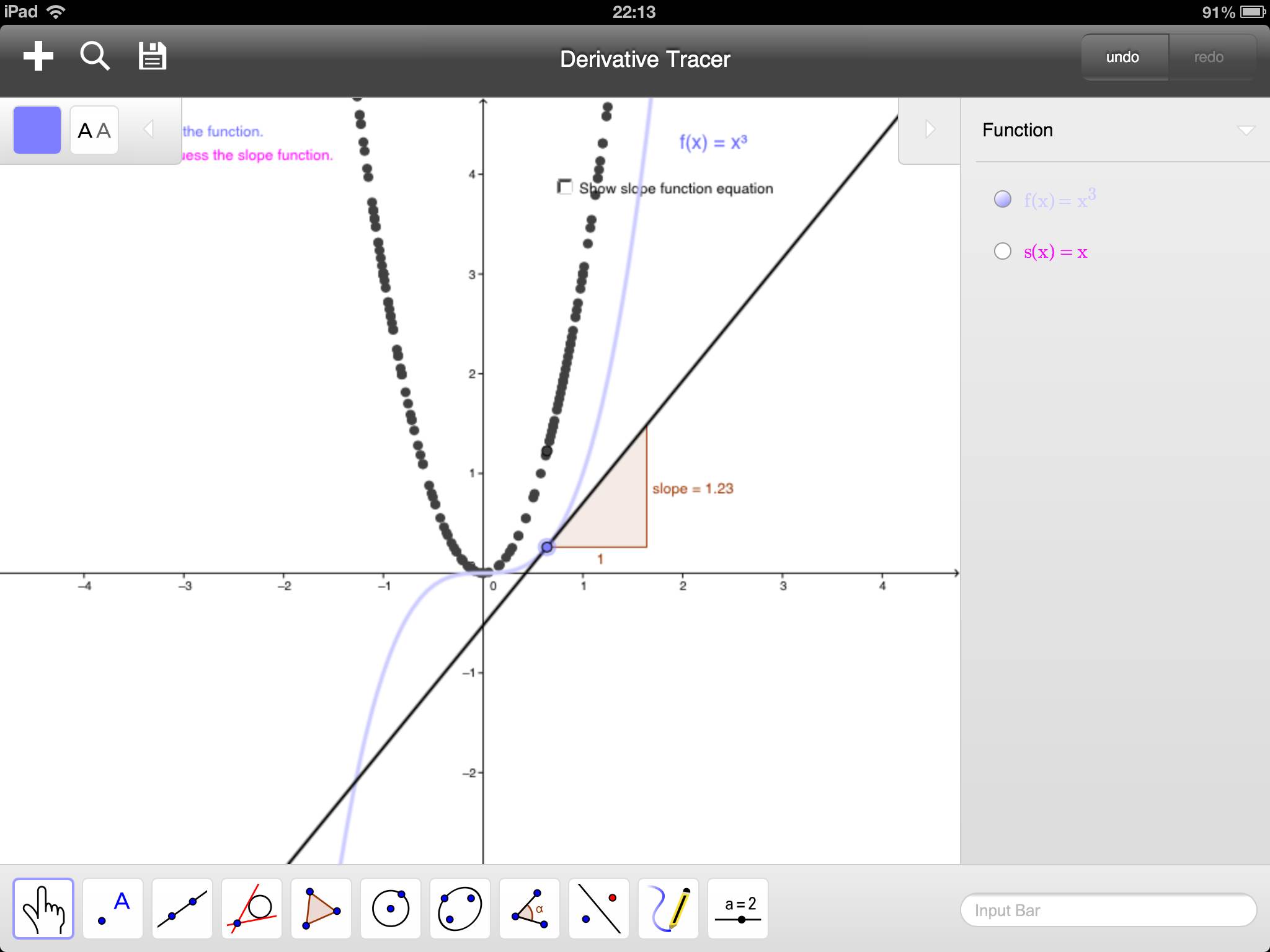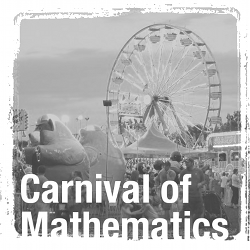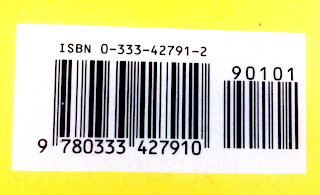GeoGebra, the Aperiodical’s official Favourite Thing for Messing About With Geometry, has just bumped up to version 5. With that bigger number comes another dimension – GeoGebra now supports three-dimensional geometry!
You're reading: Posts Tagged: software
Tydlig, a nice calculator for iOS
[youtube url=http://www.youtube.com/watch?v=xbXaKxxUomE]
Closer to a computer algebra system than a traditional calculator, this new app for iOS (iPhone and iPad) allows you to make calculations and create graphs, and mess around with the values to see what that does to the output. It looks like this is achieved without using any (explicit) symbolics, which results in a neat and pretty interface, made even nicer by the fact that you can move calculations around the screen and arrange them as you want. The name, Tydlig, is the Swedish word for ‘clear’.
If anyone’s willing to download a copy ((TYDLIG is also the name of an induction hob sold by IKEA, and if anyone wants to buy and review that too, you’re welcome to, but not for this site.)) ($4.99 on the App Store) and try it out, we’d be interested to hear how easy it is to use, and what other nice tricks it’s got up its sleeve. Use the ‘Send something in’ link above to get in touch, or leave a comment below.
More information
Tydlig on Twitter.
Mathematica free on the Raspberry Pi
Wolfram have released a version of Mathematica and the new Wolfram Language to run on the low-cost Raspberry Pi computer, and both are free.
I have Mathematica up and running on my Raspberry Pi, having followed the instructions on the Raspberry Pi site; future Raspbian images will ship with the Wolfram Language and Mathematica by default.
Computational mathematics in the cloud with Sagemath
Sage is a free, open-source computational mathematics system in the vein of things like Mathematica and Maple. For the past few years, there’s been an online version called the Sage Notebook which worked pretty well, but it was pretty slow and not particularly easy to use.
Now the creator of Sage, William Stein, has started work on The Sagemath Cloud. It’s considerably more ambitious than Sage notebook – as well as the Sage notebook interface, it gives you a sophisticated area where you can write LaTeX files with live preview, work on IPython notebooks, and even bring up a Unix terminal to do the kinds of things you need a Unix terminal for.
GeoGebra now available for tablets
You may be aware of GeoGebra. In a previous post, our very own CP described it as “a surprisingly capable piece of free dynamic maths software, used widely by teachers and geometry aficionados”. I am preparing lecture notes for the new academic year and have been making diagrams in GeoGebra (on Ubuntu, since you asked), both to print in my notes and animate in my lectures. I can insert $\LaTeX$ labels and export as code for PGF or PSTricks. Here’s one:

Now, following a successful Kickstarter (which we covered in a previous post), GeoGebra have released tablet versions of the software. So GeoGebra is now available on Windows, OS X and various flavours of Linux (.deb, .rpm, other), as a Chrome App, a Chrome Web Application and in a ‘Java Webstart‘ version (though be aware that the Java Webstart is being phased out), and now for Windows 8 or RT, Android and iPad tablets. Here is a screenshot of the iPad app:

Download and more information at the GeoGebra website.
Via MEI on Twitter and Michael Borcherds on our previous post.
Octave (Like MATLAB but free) for Android phones and tablets
Mike Croucher works as a science and engineering applications support specialist at the University of Manchester. He asked us for help publicising a Kickstarter project to port Octave to Android, so we thought the best way to do that was to ask him to explain what it’s about himself.
Carnival of Mathematics 85
 |
| 85 by brighterorange |
Introduction
Welcome to a new Carnival of Mathematics! Traditionally the Carnival opens with facts about the number, this time 85, but first I have an important point of admin to address.
From Carnival of Mathematics 59 in November 2009 until Carnival of Mathematics 84 in December 2011, the Carnival was coordinated by Mike Croucher. Mike said in a blog post (of course!) that he had “had a lot of fun doing so” but that: “Recently, however, I have struggled to find the time to give the CoM the attention it deserves and so it is time to hand over the baton.” We should all be very grateful to Mike for his effort over these two years. You can still find Mike blogging over at Walking Randomly.
Now, as a result, the Carnival has a new home (including an index of previous Carnivals) at The Aperiodical, a not-quite-yet-formally-announced blogging collaboration between Katie Steckles, Christian Perfect and me. We’ll do our best to look after the series for the time being. If you’ve been following the Carnival for a while you’ll know it only works because of a parade of volunteer hosts. The next few Carnivals are lined up but if you’d like to volunteer to host one on your blog later in the year please contact Katie. The other necessary element is submissions, and we have plenty of these this time, so let’s get to business.
 |
| Funky new Carnival logo by Katie Steckles |
85
This is Carnival of Mathematics 85. The ever-faithful Number Gossip tells me that 85 has no unique or even rare properties, being merely composite, deficient, evil, odd, square-free and a Smith number. Beyond mathematics, Wikipedia tells me that 85 is the atomic number of astatine, the ISBN Group Identifier for books published in Brazil and the lower bound (due to incomplete research) found by Jorge Stolfi (2004) for The Hollywood Constant, the smallest non-negative integer that has never been used in the title of a movie.
Serious mathematics
(Not that the rest isn’t!)
Brent Yorgey at The Math Less Traveled wrote a series of four posts in response to Depressing Expressions by Patrick Vennebush over at Math Jokes 4 Mathy Folks. In these, he is working to prove why a certain iterative arithmetic algorithm always results in a factorial. Brent says:
In particular I’m proving it using a *combinatorial* proof, a lovely proof technique that (in my opinion) isn’t used or taught as widely as it ought.
In part four Making Our Equation Count, he says,
I go through the different bits of the equation we’re trying to prove, and explain (with pictures) how to interpret each of them combinatorially.
Rebecka Peterson at Epsilon-Delta writes Extraneous Solutions of Log Equations–A Graphical Explanation. In submitting this post, Rebecka wrote:
Last semester a College Algebra student of mine asked why we sometimes get extraneous solutions when solving log equations. It was such a good question. I tried to do it justice in this post.
Drawing inspiration from the award of the Leroy P. Steele Prize for Mathematical Exposition to Aschbacher, Lyons, Smith, and Solomon for a work about the classification of finite simple groups, Gianluigi Filippelli at Doc Madhattan offers a post about finite simple groups and connections with physics in The classification of finite simple groups.
Frederick Koh from White Group Mathematics submitted Understanding MATTERS (4) saying:
Of late I noticed quite a few students (in online forums) experiencing difficulties in comprehending the concept of calculating distances between 3 dimensional vector planes in space, hence I am sharing an in depth explanation behind how things work.
Rohit Gupta at Kali & the Kaleidoscope investigates a new visualization of Möbius’ Mu, “a notorious function to classify all integers in three different boxes” in The 3 Pills of Möbius.
Art
Thomas Egense from Thomas’ mathematical adventures writes about an attempt to create mathematics-inspired art algorithmically using something called “Fractal flames”. Thomas defines fractal flames, details the algorithmic work involved, and gives several examples of the generated artwork, including the image below (used with permission).
Thomas Egense also submitted Dimensions (series of nine videos embedded below) calling this an “impressive graphical visualization of hard to grasp mathematical concepts like higher dimensions and topology”.
Last week Gathering for Gardner 10, the meeting of mathematicians, magicians, puzzlers and others inspired by the life and work of Martin Gardner, took place. Edmund Harriss, from Maxwell’s Demon, previewed his G4G10 talk in a blog post, The 2×1 rectangle and Domes. Edmund begins with the humble 2×1 rectangle, “not one of mathematics most celebrated shapes”, and ends up with structures built as accommodation at the Burning Man event.
Pop culture
Matt over at Math Goes Pop! writes in The Probability Games about the process used to select participants to take part in a fight to the death in the book and film The Hunger Games. Matt says “the rules here practically beg for some mathematical analysis” and Katie Steckles, who submitted the post, called this “just the kind of unnecessary mathematical analysis of a situation I like to see”.
Video game mathematics
Drawing inspiration from the recent arXiv preprint Classic Nintendo Games are (NP-)Hard bringing video games “out of nerdy obscurity and into cutting edge computer science”, Sam Alexander from Xamuel.com writes Toward the Mathematics of Video Game Glitches. Sam noticed a minor error in that article based on a glitch in Super Mario Brothers. Running with this theme, he defines video game glitches, game theoretically speaking, and focusing on “glitches which the player can exploit to win the game faster than intended”, defines a theorem (which he describes as “committing horrendous crimes against mathematics”!).
 |
| SNES vs. Xbox Triple60 by avail |
Performance and puzzles
Ben Nuttall writes about his experience as a maths busker.
“What is Maths Busking?” I hear you ask. Maths Busking is a street performance of mathematics whereby the buskers demonstrate mathematical ideas and engage the public in thinking like a mathematician
As well as a fuller explanation of maths busking, Ben shares some of the ‘busks’ he performed, his thoughts on the experience and some photos.
 |
| Birmingham City Centre by Maths Busking |
Katie Steckles, writing at The Aperiodical, discusses a variant of a popular mathematics ‘mind reading’ trick. I don’t want to spoil the puzzle in case you want to play along at home, so go over and check out On Disreputable Numbers.
Paul Taylor, also at The Aperiodical, writes about a puzzle he designed for Katie Steckles’ Puzzlebomb. Puzzlebomb is a monthly puzzle sheet featuring all-new types of puzzles. Following the release of the April Puzzlebomb, Paul made the following claim on Twitter:
I guarantee there has never been, and will never be, another puzzle quite like Hilbert’s Space Filling Crossword
In Words to Fill Space he justifies this assertion and describes how he created the puzzle.
Paul also writes, again at The Aperiodical, about a class of puzzle in which a number of prisoners are all given hats and their fate depends on their ability to correctly determine the colour of their own hat. Paul offers “a nice variation on the theme that I heard about at a recent MathsJam” as Another black and white hats puzzle.
Maths Jam is a monthly meeting of maths enthusiasts in pubs worldwide to share stuff they like. “Puzzles, games, problems, or just anything they think is cool or interesting“. A recent development is blogging roundups of what happened at Maths Jam meetings. Recent outings, full of puzzles and mathematical goodies, include: Newcastle (February), Manchester (March), London (February) and Melbourne (January), and a set of photos from various February Maths Jam meetings.
 |
| Maths Jam London February 2012 |
Last month I attended Newcastle Maths Jam. While there we played with a puzzle that Out of the Norm states as:
By relabelling the faces of two dice, can you design a new, unusual pair of six-sided dice that achieves rolls with the same frequencies as a pair of normal dice? All the faces must have a positive number of spots.
Dice and Dissection: a puzzle discusses this puzzle and gives a nice diagrammatic way to view the solution.
History and society
John Cook of The Endeavour writes about a wedding invitation written under the collective pseudonym of that “semi-secret group of French mathematicians”, Nicolas Bourbaki. In Nicolas Bourbaki’s wedding invitation, John explains some of the mathematical references and reveals how the invitation “nearly cost Bourbaki member André Weil his life”.
A post on Pat’sBlog goes to primary sources to highlight an error in Wikipedia in relation to the origins of the four-fours problem. That is,
using four fours and whatever mathematical operations that were allowed to make a number, or a set of numbers.
The origins of the problem apparently lie in earlier similar problems, including a problem of four threes. Read about it in Before There Were Four-Fours, There Were Four-Threes.
Guillermo Bautista at Mathematics and Multimedia writes A US President’s Proof of the Pythagorean Theorem about the proof of the Pythagorean theorem formulated by James Garfield, the 20th president of the United States of America.
Alexander Bogomolny of CTK Insights offers a little piece of mathematics in the history of chronology given in Florian Diacu’s The Lost Millennium in a post entitled Chinese Remainder Theorem: an Application to Chronology. Submitting this post, Alexander said:
Chinese Remainder Theorem is a staple of early puzzle books, both European and Eastern. This is very satisfying to learn that the theorem finds practical and important applications in the science of chronology. The book by Florian Diacu where I found this application is an exquisitely written compendium of history and mathematics of calendrical calculations. The book deserves every praise and gets my wholehearted recommendation.
In a blog post here on Travels in a Mathematical World, I was very taken with an answer given to a question about working outside traditional academia by Neil deGrasse Tyson in an interview with Samuel Hansen for the Strongly Connected Components Podcast episode 45. The whole interview (18 mins) is worth listening to. My reflections can be found as Culturally an academic.
Over at Second-Rate Minds, Samuel Hansen writes about The True Importance of Friends, explaining the origin of a result in social network theory and its implications in epidemiology.
I really noticed the absence of the Carnival back in February when I thought I might submit a couple of blog posts which got a particularly warm reaction and found the submissions form deactivated. The posts were Apparently Gauss got in this bar fight with Hilbert… and the follow-up Why do we enjoy maths history misconceptions?
Technology
John Chase from Random Walks writes about the surprising features of Microsoft Office Equation Editor, in which he makes the bold claim: “LaTeX lovers will love it”. Find out why at Microsoft Office Equation Editor.
I’ve saved the last word for this revived Carnival to the previous coordinator, Mike Croucher. Mike’s month of math software for March 2012 offers the latest news in the world of mathematical software (a month of math software has been a monthly series since January 2011).
The End
Well, that’s that for this Carnival. You can help spread the word by blogging, tweeting, etc. about the revival of the Carnival and directing people to this edition. If you’re hungry for more mathematics blog posts then there’s the previous Carnival of Mathematics 84, the latest Math Teachers At Play Carnival 48 is over at Math Is Not A Four Letter Word and you can get a weekly selection of blog posts from the Mathblogging.org Weekly Picks.
Future outings for the Carnival of Mathematics are queued over at The Aperiodical. Carnival of Mathematics 86 will be posted in May by Brent at The Math Less Travelled. Submissions for this are now open, so keep your eye out for great posts and get writing!




